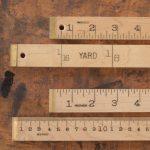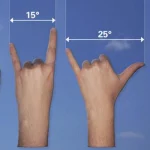How Big Can Bed Bugs Be and What Color?
Over the past few decades, the hatching of bed bugs has become more prevalent. They have established a solid image for themselves over that time. Although bed bugs are erroneously linked with dirty settings, these can be seen anywhere (skip straight to the bed bugs size charts).
Bed bugs will spread to and infest practically any place, whether it be a luxurious hotel or an antiquated apartment. Although bed bugs are not known to spread disease or constitute a severe health risk, their bites can be itchy and ugly.

Knowing where to look for bed bugs is the first step in getting rid of an infestation. This is because other insects with similar appearances are frequently confused with them. It might be challenging to distinguish different features from the naked eye when searching for any insect. Because of this, you can usually tell them apart by their size. Here is all the information you require regarding the size of bed bugs.
Jump right into the Frequently Asked Questions
Related: Cat Size Chart and Why It Is Important?, Halter Size chart – a complete sizing and fitting guide, Horse Size Charts: the complete overview
Table of Contents
- Bed bugs size chart
- What color do baby bed bugs have?
- How to measure bed bugs size
- What Size Do Bed Bugs Grow To After Biting You?
- How do bed bugs get big?
- Do bed bugs transmit disease?
- Frequently Asked Questions
Bed Bugs Size Chart
Related: Dog Kennel Size Chart: Find the right sized Kennel for your dog breed
Bed bugs are normally approximately the size of pumpkin seed and measure 14 inches in length. These bugs will appear longer and more “balloon-like” if they have just been fed. In actuality, bed bugs can grow by about 50% shortly after a meal. These creatures usually keep a reddish-brown color and have oval-shaped bodies.
Depending on where they are in their life cycle, bed bugs are typically 14 inches long. Here, we’ll show actual size of bed bugs:
| Eggs | First Stage Larva | Second Stage Larva | Thrid Stage Larva | Fourth Stage Larva | Fifth Stage Larva | Adult Male | Adult Female |
| 1mm | 1.5mm | 2mm | 2.5mm | 3mm | 4.5mm | 5.5mm | 6.5mm |
| 0.1cm | 0.15cm | 0.2cm | 0.25cm | 0.3cm | 0.45cm | 0.55cm | 0.65cm |
Insect Size Comparison Chart
| Mosquitoes | Bed Bugs | Cockroaches | Bat Bugs | Swallow Bugs | Wood Ticks | Spider Beetles | Lice | Booklice | Fleas |
| 0.4 in | 0.33 in | 0.25 in | 0.23 in | 0.18 in | 0.12 in | 0.1 in | 0.09 in | 0.06 in | 0.05 in |
| 1.016cm | 0.8382cm | 0.635 cm | 0.5842cm | 0.4572cm | 0.3048cm | 0.254 cm | 0.229 cm | 0.1524cm | 0.127 cm |
How Big Are Bugs Compared to Fleas?
You’ll need to be vigilant to recognize important differences between bed bugs and fleas because it can be challenging to differentiate between them. Fleas are typically smaller, measuring 1.5 to 3 mm long, compared to bed bugs, which can be 1.5 to 5 mm long.
The color and shape of these species can also be used to distinguish them. For instance, reddish-brown and flatbed bugs are more frequently seen. Compared to bed bugs, fleas have an oval form that is browner and seems longer and skinnier. The likelihood of finding fleas near your hairy dogs is higher despite the fact that both of these insects are nocturnal.
Pets, on the other hand, rarely get bitten by bed bugs since they can’t get as readily through their fur or hair.
How Big Are Bugs Compared to Ticks?
Ticks and bed bugs have many of the same physical characteristics. Actually, there isn’t much of a size difference between these two insects. Both insects are oval in shape, without wings, and reddish-brown in color. Both of these insects engorge with blood and get much bigger.
The primary physical difference between the two species is just one. Ticks have eight legs, whereas bed bugs only have six. Both of these insects engorge with blood and get much bigger. So, how can the common person distinguish between these two insects?
Location is the primary indicator of whether you’re looking at a bed bug or a tick. Ticks reside outside in grassy or wooded regions.
Size of Bed Bug Bites on Humans
Bedbugs prefers feeding on humans. You are less likely to notice them because they typically feed at night when you are sleeping. Some bedbugs, nevertheless, feed during the day.
A bedbug bite can be identified in various ways, such as:
- Curved-shape to the bed bug bites of typically three to four bites
- Severe itching that typically occurs in the morning
- Bites that primarily affect the arms and legs
- Bites that are covered in tiny blisters
A typical bed bug bite looks like this:
| MM | CM |
| 2 to 4 mm | 0.2 to 0.4 |
Size of Baby Bed Bugs
The nymph stage, or when the bed bug might be referred to as a “baby,” is a vital point in the bed bug’s growth. Yes, baby bed bugs are referred to as nymphs. They have a different appearance and are smaller than adult bed bugs. Because they are practically transparent, baby bed bugs are more difficult to see.
They are roughly the size of a grain of rice and considerably smaller than adults. Due to their size and color, they are hard to see. That is especially true if your bedding and linens are white.
You can find it difficult to distinguish between an adult bed insect and a baby bed bug if you compare their images side by side. Although there are small variations, the general body shape is very similar. This is because, unlike many other bugs, the bed bug does not undergo metamorphosis as part of its growth.
What Color Does Baby Bed Bugs Have?
Related: Maine Coon Size Chart by age and compared to other cat breeds
The color of baby bed bugs is a key distinction. They share the same color as bed bug eggs, which range from white to off-white. As soon as they hatch and before they take their first feeding, they are this hue.
Their color begins to change when they start to eat. The place where they keep your blood after feeding is the red lump you’ll observe in their abdomen. They consume this food, which causes them to shed skin and enlarge.
Moreover, they change from white to brown as they digest and advance to the next stage. They use the nutrients in your blood, which is why they are doing this. From the first to the fifth instar, each stage gets progressively browner.
They keep doing this until they reach adulthood. Adults have developed a brown color due to constant feeding. Once they get to this point, they never change color again. An adult or late-instar bed bug is what is known as a brown bed bug. Nymphs are white bed bugs.
How To Measure Bed Bugs Size
Related: Dog House Size Chart by breed, Horse Sizes overview by breed, weight, height, Baskerville Muzzle Size
A bed bug is around the size of a quarter of an inch. They do not get bigger as they age; therefore, their sizes can vary. Usually flat and brown, bed bugs. Although they lack wings, they can crawl on ceilings and up walls.
Bed bugs pierce the skin with tiny hollow tubes and draw blood from their hosts’ bodies while they are asleep, which is how they obtain their food.
When they first hatch, bed bugs are about the size of an apple seed and can grow up to approximately a quarter-inch long as adults. Bed bugs go through four life stages: eggs, nymphs, adults, and larvae.
The larvae are only a few millimeters long, while the eggs are barely about 1 mm in size. They can get up to roughly a quarter-inch long as adults when they develop from nymphs.
What Size Do Bed Bugs Grow To After Biting You?
Related: Dog Size Chart by breed and age: a complete guide for your dog’s needs
Once bed bugs have fed on humans, they will grow and multiply. This implies that they will enlarge after biting you. They may bite more than one person before they are completely satisfied, and they can bite any area of the body. It usually takes bed bugs a few minutes to finish a meal of human blood.
Humans are bitten by bed bugs, who inject saliva under the skin. An individual gets itchy and swells from this saliva. When a person is bitten by a bed bug, they could have allergic reactions like hives and swelling.
Anywhere on the body can be bitten by bed bugs, and they frequently bite the neck and arms and other places where clothing is easily removed.
Learn more about the signs of bed bugs bites (Video)
How Do Bed Bugs Get Big?
Related: Dog Turtleneck Size Chart – The Ultimate Guide, Dog House Size Chart by breed
When bed bugs initially hatch from their eggs, they are very small, but they quickly grow. When they hatch, they are about the size of an apple seed. Bed bugs can grow to a maximum length of 5/16 inches for males and 3/8 inches for females after feeding.
Without magnification, bed bug eggs are almost impossible to spot. They typically appear as little white spots and are arranged in clusters. In around ten days, bed bug eggs hatch into nymphs that require blood to progress past their initial stage of development.
Bed bugs “molt” or shed their skin in this manner. Following a meal, they travel to a remote location to shed their skin and emerge as a new, bigger bug.
When you locate it, the discarded skin should still be there. If it isn’t, you can also look for a black speckled appearance where the bed bug was molting or laying eggs on your sheets or mattress. You can use this to determine its hiding place during the day.
Do Bed Bugs Transmit Disease?
Related: Dog Bed Sizing Guide – Choosing the Right Bed Size for Your Dog, Dog Leash Size Chart
The bites themselves don’t pose a significant threat to health, but the blood is quite contagious to people. It’s the human blood that makes bed bugs alive. Every time a bed bug bites someone, it could come in contact with blood from the previous victim.
This is because every time someone gets bit, a minute amount of that person’s blood is transmitted to the bite victim’s skin.
When people scratch their bites, they create additional microscopic skin wounds and raise their risk of developing an infection.
Frequently Asked Questions
What is the size of bed bugs compared to fleas?
Both pests’ adults are brown (bed bugs turn reddish-brown after a blood meal). Fleas are around 1/8 inch long, and adult bed bugs are about 3/16 inch long. Fleas and bed bugs have separate life cycles. Bed bugs gradually change into new forms (eggs, nymphs in multiple stages, then adults).
What is the size difference between bed bug bites and mosquito bites?
Bites from mosquitoes typically happen randomly and can happen wherever that clothing does not cover them. They appear as a bloated, puffy hump that is either white or red and has a little puncture wound in the middle. Bed bug bites, on the other hand, are little red spots that can blister or resemble a pimple.
What is the biggest size of a bed bug?
In general, adult bed bugs are roughly the size of an apple seed (5-7 mm or 3/16–1/4 inch long); long, brown, and have an oval-shaped, flat body (if they haven’t been fed recently);
Are bed bugs visible to the eye?
Bed bugs can be seen with the unaided eye. The color of adult bed bugs is often brown. Their color changes from red to dark brown when they are filled with blood.
How do I know if I have bed bugs?
Almost all bed bug bites cause discomfort in some form, usually itching and irritation. Common symptoms include fluid-filled blisters, itchy, stinging spots that are red, and swelling.
How long do bed bugs live?
Adult bed bugs typically only have a lifespan of two to four months. Young nymphs can go for days or even weeks without a blood meal. Under ideal circumstances, older nymphs and adults can last up to a year without a blood meal.
What is the main cause of bed bugs?
They may come from old furniture or other contaminated sites. They can travel in bags, backpacks, purses, and other goods that are placed on padded or soft surfaces. In multi-unit structures like hotels and apartment buildings, they can move across rooms.
Can you feel bed bugs crawling?
Especially while you’re lying in bed or when several bugs are feeding at once, you could feel bed bugs crawling across your skin. However, even after bed bugs have been eliminated from your home by a pest control specialist, you could be still able to picture the crawling sensation.
Conclusion
The presence of bed bugs is a major issue for many people all around the world. They are present in certain homes as well as in motels and single-room occupancy buildings. During the night, bed bugs bite and consume human blood, creating unpleasant welts and red blotches.
Since a mature bug is roughly the size of a penny or the head of a pin, they are difficult to see. Bed bug infestations can significantly irritate skin and cause emotional distress if left untreated.
So, having knowledge can help make the process a little bit simpler. It can be challenging for unskilled people to correctly identify bed bugs based only on the aforementioned features, like size and color. A professional pest control technician’s on-site inspection is advised if you’re unsure whether an insect you’ve seen is a bed bug or are worried that you could have an infestation.
Hopefully, this bed bug size guide will enable you to distinguish it from other insects.
Please leave a comment if you have any questions or concerns.
Picture in this post is by Alexandra Gorn on Unsplash
Related to Bed Bugs
- Barbie Doll Size : What are different sizes of Barbie ?
- Blanket sizes chart : blanket sizes and dimensions in inches & cm
- Tablecloth size chart – What are standard tablecloth sizes ?
- How Many Meters Are In A Yard?
- How Many Centimeters are 8 Inches?
- Knife Sizes and Different Types
- 4 Inches is How Many Centimeters?
- Light Bulb Base Sizes : What size light bulb base do I need?
- Tesalate Towel Size Guide
- Light bulb Size : What are the different and standard bulb sizes?
- Duvet Sizes: What is a Standard-Size Duvet?
- Single Car Garage Size and Dimensions
- How High Is A Story?
- How Much Does 1 Cup Of Rice Weigh?
- Cast Iron Skillet Sizes: What Size Do I Need?
- Dollar Bills Size Chart
- Pizza Sizes: Which One to Order?
- How To Measure A Foot Without A Ruler
- Wine Glass Size Chart
- Tiny Houses Size Charts
- How Many Inches Are In 20 Centimeters?
- How To Measure 1 Meter Without A Ruler?






















